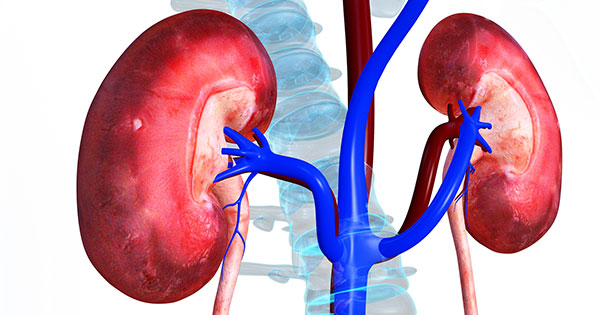Renal failure occurs when the normal functioning of kidneys is affected due to permanent or temporary damage to the kidneys. Kidney failure can either be acute or chronic. Acute renal failure starts abruptly and has the potential to be reversed and prevent permanent damage. Chronic renal failure starts slowly and worsens over a period of time, minimum three months. It can lead to permanent renal failure.
Nursing diagnosis for renal failure can help you determine the causes, symptoms for both these types of renal failures along with the treatment and possible outcomes.
Diagnosis for Renal Failure
 For a complete diagnosis of renal failure, a complete medical history is taken followed by a physical examination. The following tests are done to determine renal failure:
For a complete diagnosis of renal failure, a complete medical history is taken followed by a physical examination. The following tests are done to determine renal failure:
- Blood tests: This is necessary to determine electrolyte levels, blood cell count and the kidney functioning
- Urine test: This will also help in determining the functioning of the kidneys
- Ultrasound or sonography: In sonography, sound waves are passed over the abdomen in the area of kidney. These sound waves form an image on the screen, which help in determining the size, shape and any anomalies in the kidney. Any mass, stone, cyst or obstruction can be detected by this method.
- Biopsy: A small tissue sample of the kidney is taken by means of a needle or during surgery. This tissue sample is then checked under microscope for any abnormalities, especially cancerous growth or presence of abnormal cells.
- CT scan: Computed tomography is done using X-rays and computers to generate images in the form of thin slices of the body. It helps in showing detailed images of the body parts and can be used on all body parts like bones, fats, muscles, etc. They are much more detailed than normal X-Rays.
Nursing Diagnosis for Acute Renal Failure
 When there is abrupt loss of kidney functioning, it is called acute renal failure. The glomerular filtration rate falls rapidly together with an increase in the urea nitrogen and serum creatinine levels. If it is not treated, it can have complications and lead to chronic renal failure.
When there is abrupt loss of kidney functioning, it is called acute renal failure. The glomerular filtration rate falls rapidly together with an increase in the urea nitrogen and serum creatinine levels. If it is not treated, it can have complications and lead to chronic renal failure.
1. Excess Fluid Volume
The primary factor for nursing diagnosis for renal failure, it is related to disturbances in the mechanism of kidney functioning. Symptoms may include less urine output, weight gain, edema, restlessness, mental state alterations, changes in electrolyte levels, decrease in hemoglobin, urine specific gravity changes, and pulmonary congestion.
Interventions
- Measure fluid input and output accurately.
- Check the specific gravity of urine.
- Weigh the person every day, at the same time and on the same scale.
- Check edema on body parts and the degree of edema as well.
- Check the blood parameters, x-rays, level of consciousness and heart rate.
2. Risk for Decreased Cardiac Output (RF may include: fluid overload, fluid shifts, and fluid deficit).
Due to the changes in the fluid level, it can result in decreased cardiac output and hence is essential from the nursing diagnosis for renal failure point of view.
Interventions
- Monitor the blood pressure and heart rate.
- Check heart sounds, ECG for any changes in the heart rhythm.
- Check for changes in skin color, nail beds.
- Monitor blood test results for minerals and administer medication as required.
3. Risk for Imbalanced Nutrition: Less Than Body Requirements
Dietary restrictions may cause fewer nutrients; there can be protein catabolism which results in malnutrition as well. The metabolic needs increase and there can be nausea and vomiting which results in imbalanced nutrition.
Interventions
- Check the dietary intake history and maintain current intake, as well as assess it.
- Give small and frequent feedings, which will help in dealing with nausea and anorexia.
- Give them a variety of options in foods as well as fluids and get them involved in making their menu plan.
- Weigh the person daily on same scale.
- Get a dietitian on the team, prepare high calorie, moderate or low protein diet and maintain electrolyte balance.
4. Risk for Infection
There is an increased risk of infection due to reduced immunologic defenses, various invasive procedures like catheterization, as well as malnutrition.
Interventions
- Maintain good hygiene and ensure the patient also follows it.
- Use aseptic techniques, avoid invasive procedures when possible, change dressings as per protocol only.
- Assess skin integrity and keep monitoring vital signs as well.
- Check WBC count and give antibiotics when required.
5. Risk for Deficient Fluid Volume
An important criterion in nursing diagnosis for renal failure is changes in fluid volume. There is loss of fluid and strict restriction on intake can cause imbalance.
Interventions
- It is very important to measure and note the input and output of fluids including insensible loss.
- Allowed fluid intake should be spread over 24 hours and any signs and symptoms of dehydration should be checked.
- Check the heart rate, blood pressure and lab reports.
6. Deficient Knowledge
Deficient knowledge can mean inability to recall, misinterpret information and seem unfamiliar to given information. Symptoms may include asking repeated questions, seeking information, stating incorrect information, unable to correctly follow instructions, and other complications.
Interventions
- Check the disease prognosis and inform patient of available options like dialysis or renal transplant.
- Check diet plan and restrictions and ensure that patients are following them well.
- Regular weight check-up should be done, fluid input and output should be measured.
- Provide emotional support and discuss the presence of continuous fatigue with patient.
Nursing Diagnosis for Chronic Renal Failure
Chronic renal failure happens when there is progressive and gradual loss of kidney functioning. The progress is usually so slow that the symptoms are not visible till the kidneys almost stop working.
1. Risk for Decreased Cardiac Output
This can be a result of reduced circulating volume, systemic vascular resistance and myocardial workload.
Interventions
- Check for lung and heart sounds, presence of edema, dyspnea and congestion.
- Check for signs of hypertension, postural changes in blood pressure.
- Check for chest pain, activity level assessment and response to activity.
- Chest X-rays can be taken, monitoring of blood parameters should be done.
2. Risk for Ineffective Protection
An abnormal blood profile which includes decreased RBC, changes in clotting factor, and increased capillary fragility can put a person at risk of ineffective protection.
Interventions
- Check level of consciousness, changes in behavior, ability to perform given tasks, any reports of weakness or fatigue.
- Provide assistance when required, check venipuncture sites for swelling, bleeding.
- Monitor lab reports, check stool test report, give fresh blood as required.
3. Disturbed Thought Process
Accumulation of toxins like urea in the blood can cause electrolyte imbalance, metabolic acidosis and calcifications in the brain. Symptoms may include disorientation as to time, place and person, reduced attention span, memory loss, inability to make decisions, changes in behavior, and coma.
Interventions
- Check attention span, level of decrease in memory and orientation.
- Give quiet environment and reorient them to place and people.
- Give information or instructions in small and simple sentences and speak slowly.
- Ensure regular schedule is followed, patient receives adequate rest and oxygen is given as required
4. Risk for Impaired Skin Integrity
Peripheral neuropathy, anemia along with tissue ischemia, edema, dehydration, immobility and presence of toxins in skin can cause impairment to skin integrity.
Interventions
- Skin inspection should be done regularly to check for vascularity, turgor, change in color, etc.
- Check for edema, hydration of skin and mucous membranes; apply soothing skin care products.
- Change position frequently, pad bony parts with protectors, and dress in loose cotton clothing.
- Use foam or floating mattress.
5. Risk for Impaired Oral Mucous Membrane
This is caused due to fluid restrictions which cause reduced salivation, chemical irritation of membrane and conversion of urea to ammonia in the saliva.
Interventions
- Check oral cavity for dryness, inflammation, ulcers and saliva characteristics.
- The fluid intake should be spread out over 24 hours.
- Oral care should be maintained, breath mints, gum can be given.
- Dental hygiene should be practiced and encouraged.
- If required, artificial saliva can be administered.
6. Deficient Knowledge
Limited cognitive functioning, unable to recall and misinterpret information. Symptoms may include having misconceptions, frequently asking questions, and unable to follow instructions correctly.
Interventions
- Check the progress of disease and explain future expectations.
- Nutritional restrictions should be strictly followed, for example fluid and sodium intake.
- Phosphorus and Magnesium should also be restricted.
- High calories from carbohydrates are recommended.
